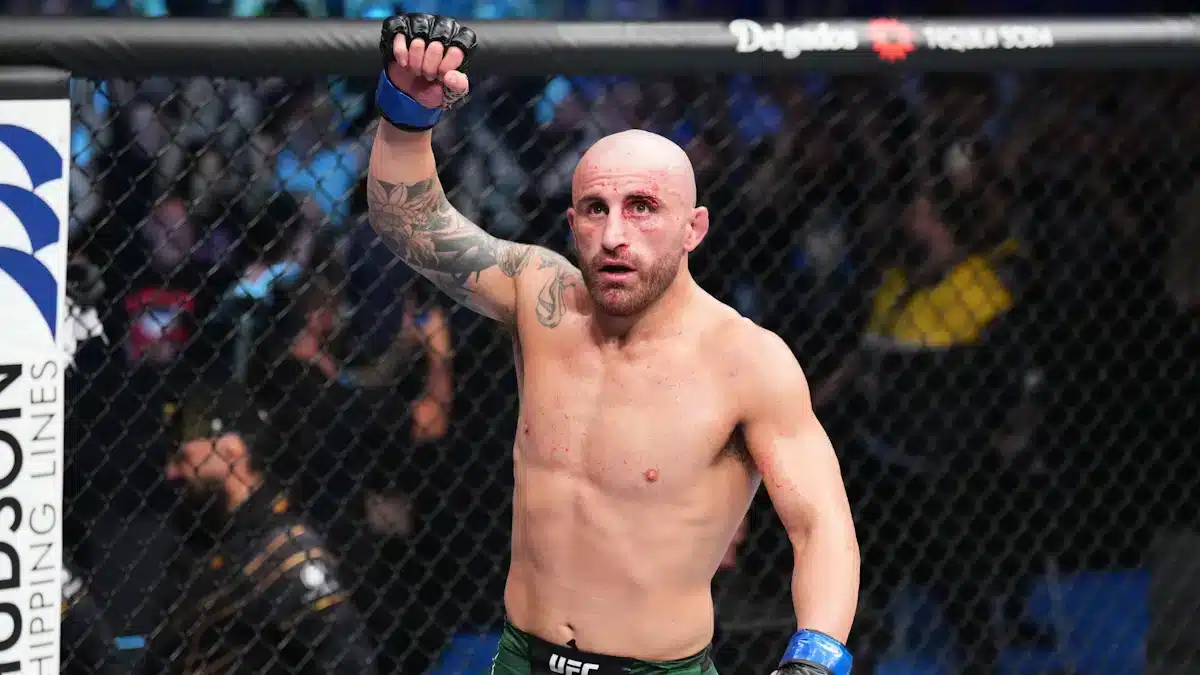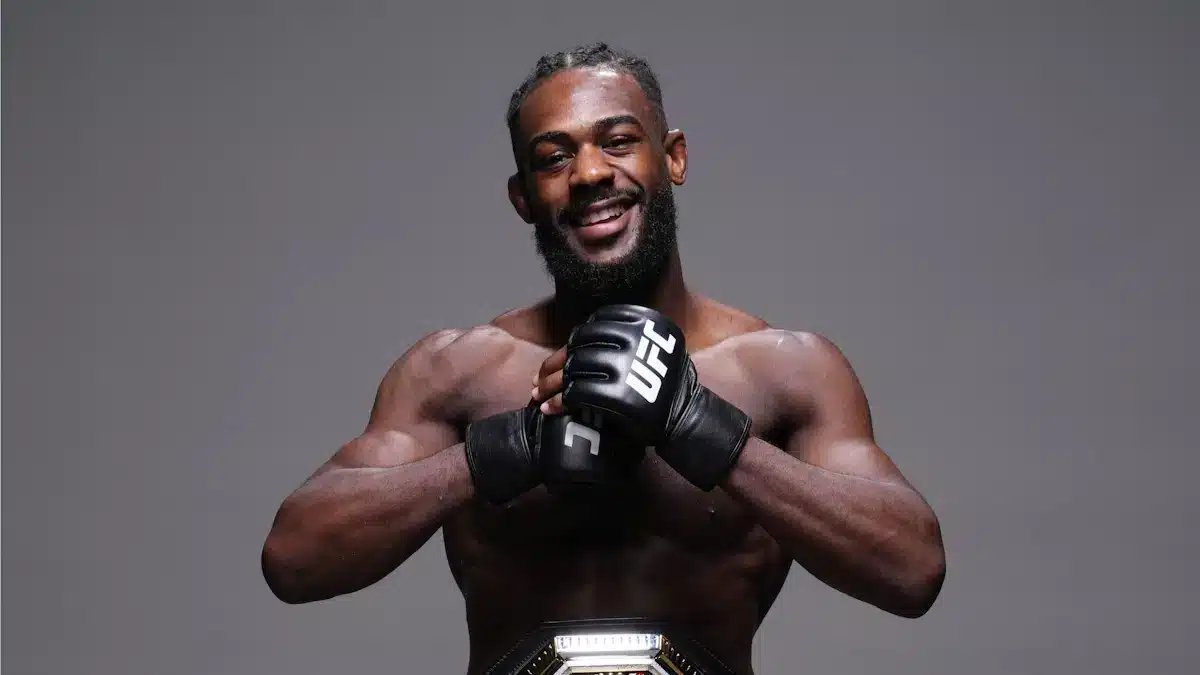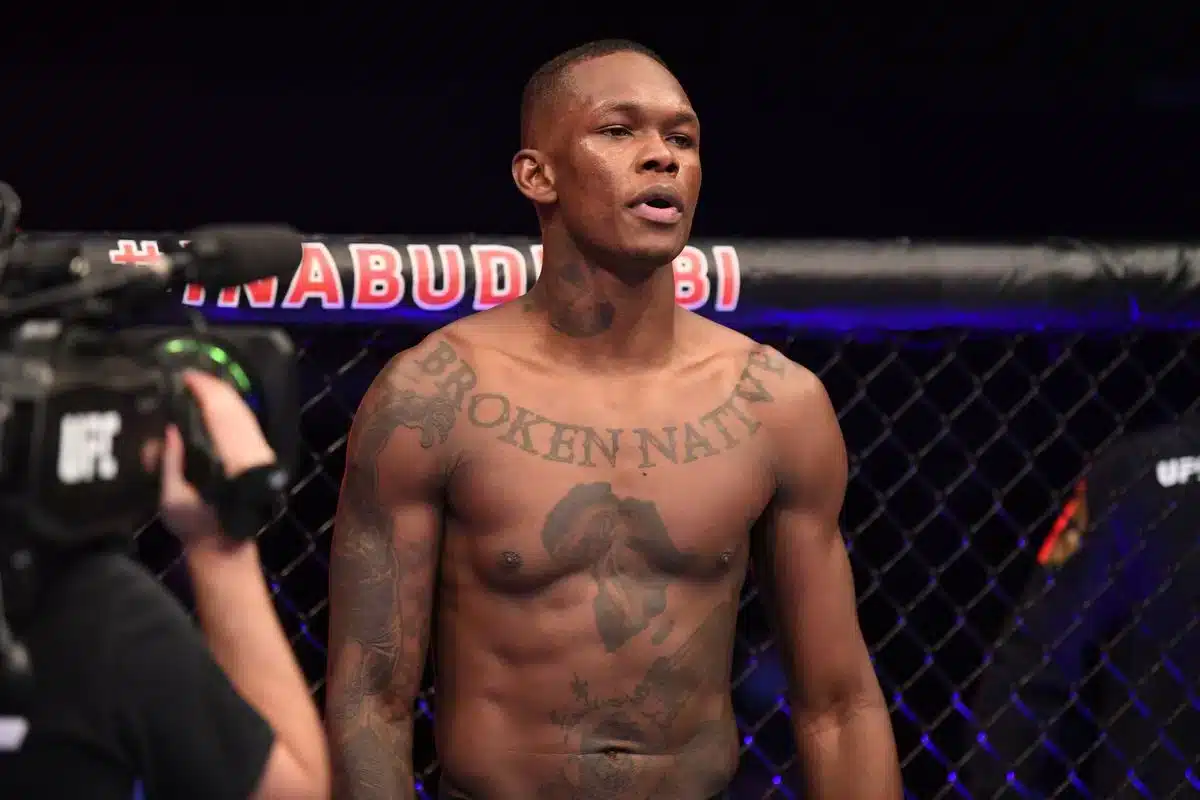Ringside Report MMA, the Inside UFC Fighter Pay and Earnings episode, including a preview of UFC Vegas 54 featuring Aleksandr Rakic v. Jan Blachowicz and Ryan Spann v. Ion Cutelaba for May 12, 2022. Hosted by Dave Simon, Fred Garcia and AJ D’Alesio.

Table of Contents
For more on the topic of Fighter Pay, check out our exclusive interview with UFC Fighter Charles Jourdain
Inside UFC Fighter Pay and Earnings
The guys talked about Nate Diaz’ ongoing dispute with the UFC and the UFC defending their pay structure.
Within the fiercely competitive arena of the Ultimate Fighting Championship (UFC), fighters engage in more than just physical battles; they navigate a complex financial ecosystem that determines their livelihood.
‘UFC Fighter Pay and Earnings Secrets’ offers a meticulous exploration of the nuanced compensation packages that skilled martial artists receive. This discourse reveals the multifarious factors influencing a fighter’s income, including base salaries, win bonuses, performance incentives, and the pivotal role of sponsorship and brand endorsements.
It also scrutinizes the disparities in pay scales among athletes, the impact of media rights deals on revenue streams, and the strategies fighters employ to optimize their earning potential amidst the inherent health risks of the sport.
The insights provided herein illuminate the opaque intricacies of fighter economics, granting a comprehensive understanding of the fiscal dynamics within the UFC.
Key Takeaways Regarding UFC Fighter Pay and Earnings
- The average UFC fighter in 2022 made $150,249, indicating a decent earning potential in the sport.
- Top UFC fighters in 2022 earned an average of $1,177,200.
- Fighter pay is influenced by their position in the card and training camp expenses, highlighting the importance of performance and preparation.
- UFC fighters receive a guaranteed amount and a win bonus, with variations for opposing fighters, providing an opportunity for higher earnings based on results.
- Sponsorships and endorsements are significant sources of income for UFC fighters, allowing them to increase their earnings through outside opportunities.

Understanding UFC Fighter Salaries
Within the realm of mixed martial arts, UFC fighter salaries are a complex amalgamation of guaranteed payouts, win bonuses, performance incentives, and sponsorship deals.
The UFC fighter pay distribution is not uniform and varies significantly among athletes. Entry-level fighters may receive a modest guaranteed amount and a win bonus, while top-tier fighters enjoy much larger base salaries and potential pay-per-view shares.
Influences on fighter pay extend beyond card placement; they include marketability, fight outcomes, and contractual negotiations. Performance bonuses and sponsorship arrangements, such as the UFC’s apparel deal with Venum, supplement these earnings.
Additionally, discretionary bonuses for exceptional performances can further enhance a fighter’s payday, making the financial landscape of a UFC fighter multifaceted and dynamic.
Key Factors Affecting Pay
Fighter pay in the UFC is significantly impacted by a variety of factors. These factors include marketability, skill level, and the nature of their contract with the promotion. Key factors in fighter pay also involve a fighter’s position on the card, a record of wins and losses, and the capacity to attract viewers, which ties back to their marketability. Performance and fight night bonuses further influence a fighter’s overall earnings, rewarding exceptional displays in the octagon.
Moreover, the impact of UFC’s deal with ESPN has substantially shaped fighter compensation structures. This partnership has brought increased visibility and revenue to the sport, potentially allowing for better paydays for fighters as the UFC’s financial ecosystem grows and evolves.

The Structure of Fight Purses
Delving into the structure of fight purses, it becomes evident that UFC fighters’ financial compensation is a complex amalgamation of guaranteed show money, win bonuses, and performance incentives.
- Exploring Fighter Payout Disparities
- Guaranteed Show Money: Base compensation irrespective of fight outcome.
- Win Bonuses: Additional earnings for securing a victory.
- Performance Incentives: Extra compensation for standout performances.
- Examining the Influence of Rankings on Pay
- Higher-ranked Fighters Typically receive larger purses and bonuses.
- Promotional Favourites: May earn more despite lower rankings due to marketability.
- Ranking Advancements: This can lead to significant increases in future fight purses.
The interplay between these elements paints a nuanced picture of the earning potential within the UFC, underscoring the importance of both in-cage success and promotional value.

Bonus System Breakdown
The bonus system serves as a critical component of a UFC fighter’s income, complementing guaranteed show money and win bonuses with additional financial rewards for exceptional performances. Performance bonuses are particularly impactful, as they are awarded for standout fights and displays of superior skill, providing a financial incentive for athletes to engage in entertaining and dominant displays. These bonuses can significantly enhance a fighter’s pay, often equating to a substantial percentage of their contractual purse.
The importance of accumulating bonuses cannot be understated. Consistently earning these rewards can lead to a noticeable increase in a fighter’s overall earnings. For many combatants, bonuses are a strategic target that can help secure financial stability and recognition within the sport.

Sponsorship and Endorsement Deals
UFC fighters’ income is significantly bolstered by sponsorship and endorsement deals, which can rival or even exceed their earnings from fights alone. The landscape of these deals has been transformed by the impact of social media, allowing fighters to leverage their online presence to attract lucrative partnerships.
- Impact of Social Media
- Increased Visibility: Platforms like Instagram and Twitter amplify a fighter’s profile.
- Direct Engagement: Direct connection with fans enhances marketability to sponsors.
- Brand Alignment: Opportunities to align with brands that resonate with a fighter’s image and values.
- Negotiating Sponsorships
- Representation: Agents and managers play a key role in securing deals.
- Value Proposition: Fighters must articulate their value to potential sponsors.
- Contractual Agreements: Ensuring terms that benefit both the athlete and the endorsing brand.
Comparing MMA Promotional Earnings
In the realm of mixed martial arts, fighter remuneration varies widely across different promotions. UFC leads in pay scales compared to organizations like Bellator, ONE Championship, and PFL.
The contrast is notable when comparing MMA promotional earnings between UFC and Bellator. UFC fighters, on average, earn more, with top earners like Jon Jones raking in nearly $7 million in a single event. Bellator, while competitive, often caps at around $300,000 per fight for their biggest stars.
The disparity is further evident in the comparison of UFC vs ONE Championship earnings. While ONE does offer substantial paychecks, with top fighters earning between $100,000 and $200,000 per bout, it still falls short of the UFC’s lucrative purses buoyed by their ESPN deal and pay-per-view revenue streams.
The Reality of Health Risks
Facing the stark reality of health risks, UFC fighters often contend with the long-term consequences of their physically demanding profession. While the thrill of competition and the prospect of substantial earnings can be compelling, the health consequences are an inherent part of the sport. Ensuring fighter safety is a complex challenge that involves multiple aspects:
- Physical Trauma
- Acute injuries such as fractures and concussions
- Chronic issues like traumatic brain injury (TBI) and joint wear
- Mental Health
- Psychological stress and anxiety
- Potential for depression and post-traumatic stress disorder (PTSD)
- Post-Career Quality of Life
- Long-term physical disability
- Necessity of ongoing medical treatment
These factors contribute to a sobering picture of the sacrifices fighters make in the pursuit of their careers.
Strategies for Maximizing Income
Amidst the volatility of fight purses, UFC athletes employ various strategies to maximize their income, both inside and outside the octagon. Personal branding techniques and leveraging social media presence are crucial to these strategies. Fighters are increasingly aware of the importance of building a distinct persona that resonates with fans and sponsors alike.
| Strategy | Description |
|---|---|
| Personal Branding | Crafting a unique image and persona to attract sponsorships. |
| Social Media Presence | Engaging with fans and promoting fights to increase following. |
Frequently Asked Questions
How Do UFC Fighters Manage Their Finances and Plan for Long-Term Financial Security, Given the Sporadic Nature of Fight Earnings?
UFC fighters navigate the financial labyrinth with astute literacy, often employing diverse investment strategies to secure longevity in wealth, akin to a disciplined combat strategy ensuring victory beyond the unpredictable octagon of earnings.
What Are Some of the Most Unexpected Costs UFC Fighters Have to Bear That the General Public Might Not Be Aware Of?
UFC fighters incur unexpected costs, such as extensive training expenses and unforeseen medical costs, often overlooked by the public but significantly impact the athletes’ net earnings and financial stability.
How Does the UFC’s Pay Structure Compare to Other Professional Sports in Terms of Percentage of Revenue Shared With the Athletes?
The UFC’s pay structure, compared to other professional sports, lacks revenue transparency and may provide lower percentages to athletes despite potential earnings from fighter endorsements.
Conclusion UFC Fighter Pay and Earnings Secrets
In conclusion, the economic landscape of UFC fighter compensation is a multifaceted arena where combatants must navigate various revenue streams to optimize their financial gain.
A striking statistic underscores this reality: despite health risks and rigorous training, many professional fighters earn less than the median American household income. This disparity highlights the impetus for fighters to strategically engage with performance incentives, sponsorship deals, and promotional opportunities to bolster their financial standing within the competitive sphere of professional MMA.

Podcast: Play in new window | Download
Subscribe to Ringside Report's Podcasts Spotify | RSS










